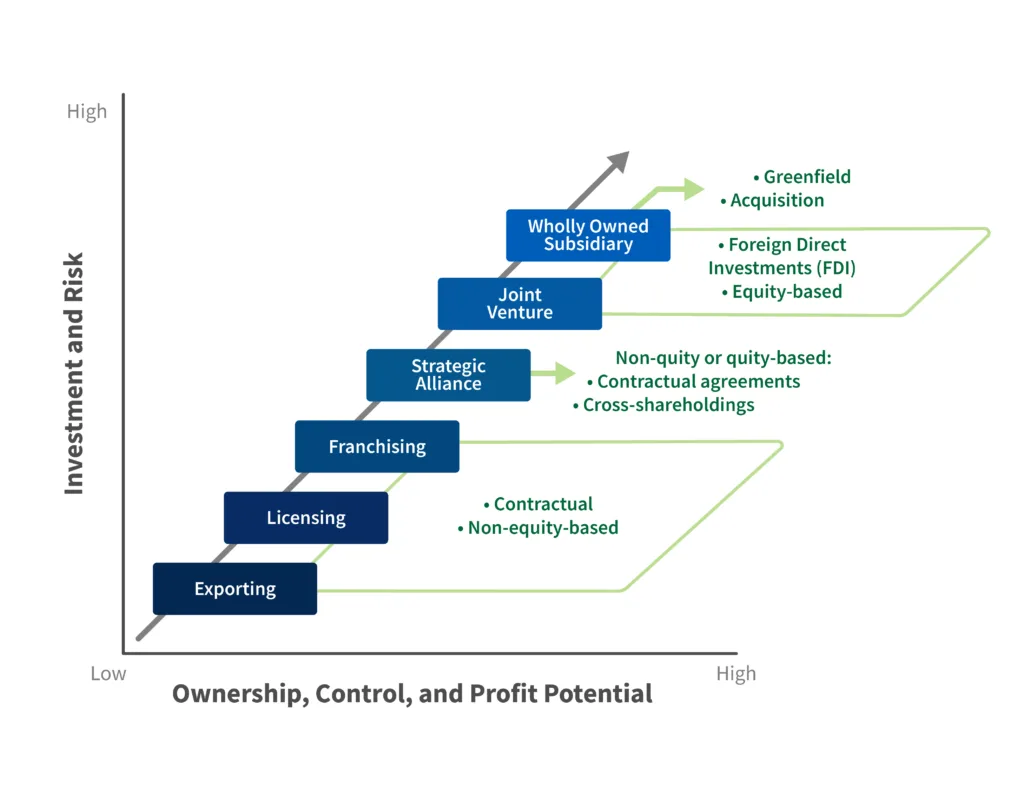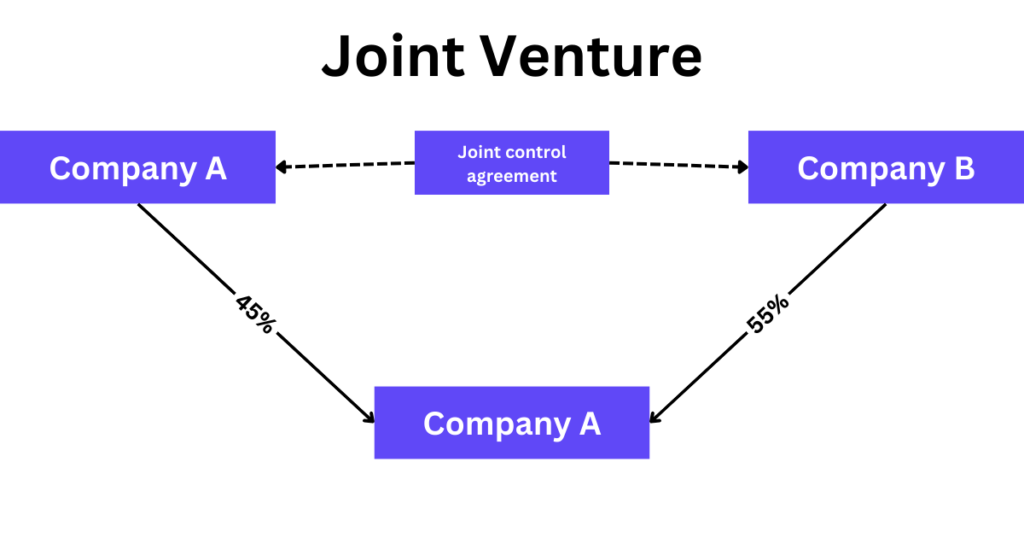The European market stands as a mosaic of cultures, economies, and opportunities, beckoning businesses worldwide to explore its diverse landscape. Spanning across 44 countries, this amalgamation of uniqueness not only fuels its allure but also presents a myriad of challenges and complexities for those seeking entry.
Why enter the European Market?
Beyond its historical richness and architectural marvels, the European market possesses a significant economic gravity that cannot be ignored. It represents one of the world’s largest consumer markets, with a population of over 740 million people, each with distinct preferences, behaviors, and needs. This diversity in demographics and consumer behavior makes it an enticing hub for businesses aiming to expand their global footprint.
Moreover, the European Union (EU), with its unified trade policies and regulations, creates a conducive environment for businesses to operate seamlessly across borders. The EU’s commitment to a single market with common standards and currency simplifies trade and fosters a business-friendly ecosystem.
The Allure of Diversity
The European market’s allure lies not just in its sheer size but also in its cultural tapestry. From the flamboyance of fashion in Milan to the historical charm of Prague and the bustling financial centers of London and Frankfurt, each region presents a unique set of opportunities and challenges.
Understanding the nuanced preferences and behaviors of consumers across these varied landscapes is pivotal for businesses eyeing success. It’s a playground where language, traditions, and customs intertwine to shape consumer choices, demanding an astute understanding of local sentiments.
Economic Resilience and Innovation
Europe stands tall in its economic resilience, boasting a mature market that thrives on innovation and sustainability. The continent leads in several industries, including automotive, healthcare, fashion, and technology. Its commitment to green initiatives and sustainable practices also opens doors for businesses focused on eco-friendly solutions and products.
Furthermore, Europe serves as a breeding ground for innovation hubs, nurturing startups and technological advancements. From AI-driven enterprises in Berlin to fintech disruptors in Stockholm, the European market incubates a culture of innovation that attracts global attention.
Navigating the European Market Entry Points
However, despite its allure, tapping into the European market requires a strategic approach. The vastness of cultural differences, language barriers, regulatory intricacies, and market diversities pose significant challenges for businesses looking to establish a presence.
Navigating through these challenges demands a meticulous understanding of market entry methods tailored to fit individual business objectives. From traditional approaches like exporting and joint ventures to modern-day digital strategies, each method carries its own set of pros and cons.
The Path Forward
As businesses contemplate their European expansion, the road ahead is both promising and challenging. The key lies in meticulous planning, a deep understanding of market nuances, and the selection of an entry method aligned with the company’s vision, resources, and risk appetite.
The European market’s allure is undeniable, beckoning businesses with promises of growth, innovation, and global success. Yet, to harness its potential, one must embrace its complexities and diversity with a strategic and adaptive mindset.
Exploring Market Entry Methods into the European Market

Determining the optimal strategy for entering a new market is a pivotal decision for any company. The question often arises: what’s the best approach? Is it wiser to establish an export base or license products to gain initial experience in a new country or region? Alternatively, does the allure of being a first mover justify more assertive moves like forming alliances, making acquisitions, or even establishing wholly-owned subsidiaries?
Many companies follow a progression from exporting to licensing, gradually escalating their investment strategy, treating these steps as a learning curve. Each approach carries its distinct advantages and drawbacks. In this segment, we’ll delve into the conventional modes of international expansion, exploring options beyond importing: exporting, licensing, strategic partnerships and alliances, acquisitions, and establishing new subsidiaries, also known as greenfield ventures. The table below outlines methods and their respective characteristics. Each mode brings its own set of pros and cons, demanding thorough evaluation to align with a firm’s strategy and objectives. Choosing the most suitable entry mode requires a careful assessment of these options.
| Type of entry | Advantages | Disadvantages |
| Exporting | Fast-entry, low financial risk, diversified revenue source | Low control, low local knowledge, potential negative environmental impact of transportation, cultural and language barriers, transportation costs and complexities |
| Licensing & Franchising | Fast-entry, low-cost, low-risk, shared marketing costs, potential for rapid global expansion | Less control, licensee may become a competitor, legal and regulatory environment (IP and contract law) must be sound, quality/brand control challenges, royalty and franchise fees |
| Strategic Alliance | Shared costs reduce investment needed, reduced risk, seen as local entity, access to new markets and customers, rapid market entry | Higher cost than exporting, licensing, or franchising; integration problems between two corporate cultures, risk of sharing sensitive information, lack of full control |
| Joint Venture | shared costs, reduced risk exposure, local perception, access to new markets and customer segments, and quicker market entry. | Joint ventures typically incur higher costs compared to exporting, licensing, or franchising. Challenges may arise in integrating different corporate cultures, there’s a risk associated with sharing sensitive information, and there’s a lack of complete control over decision-making and operations. |
| Acquisition | Fast entry into a new market, established operations, access to local distribution channels | High upfront cost, integration issues with home office, cultural differences |
| Whole owned subsidiary | Gain local market knowledge; can be seen as an insider who employs locals; maximum control | High initial investment, high risk due to unknowns, longer time to establish operations, lack of local market knowledge |
1. Exporting
Exporting remains a fundamental entry method. It involves selling products or services directly to customers in Europe from the home country. This method requires less initial investment and allows companies to test the market waters. However, it may face challenges like language barriers, logistics, and varying regulations across European countries.
Illustration: A small family-owned organic skincare brand based in California, keen on tapping into the European market, initiates exporting. They start by shipping a limited range of products directly to consumers in the UK and Germany. This approach allows them to test the market response, gather feedback, and understand local preferences. Despite initial language barriers and logistical challenges, they gradually tailor their marketing strategies, packaging, and product offerings to better suit European consumers.
2. Joint Ventures and Strategic Alliances

Collaborating with local partners through joint ventures or strategic alliances is another avenue. This method leverages the expertise and networks of established European companies. It provides insights into local market preferences and regulations while sharing risks and resources. However, aligning goals and strategies with partners and potential conflicts are critical considerations.
Illustration: A technology startup from the United States specializing in artificial intelligence seeks to expand its presence in Europe. To leverage local expertise and networks, the company forms a joint venture with a well-established tech firm in France. This collaboration allows the startup to access the French market swiftly while benefiting from the partner’s market knowledge and established customer base. However, aligning strategic visions and mitigating potential conflicts between the companies’ approaches and cultures becomes a focal point.
3. Licensing and Franchising
Licensing involves granting the rights to use intellectual property, such as patents or trademarks, in exchange for royalties. Franchising, on the other hand, allows businesses to replicate their model using local franchisees. Both methods offer market penetration with lower investment and risk. Yet, maintaining brand consistency and control can be challenging.
Illustration: A renowned American fast-food chain adopts franchising as its market entry strategy in Europe. They grant licenses to local entrepreneurs in Spain, Italy, and Sweden to operate franchise outlets using their brand name, recipes, and business model. While this method swiftly expands their presence in these countries with lower initial investment and risk, ensuring consistent brand quality and adherence to standards across different franchisees becomes a challenge.
4. Establishing Subsidiaries
Setting up subsidiaries involves creating a separate legal entity in Europe. This method grants full control over operations, enabling companies to adapt strategies to local nuances. However, it demands substantial investments, legal complexities, and a deep understanding of local regulations and market dynamics.
Illustration: A multinational pharmaceutical company decides to establish subsidiaries in various European countries to deepen its presence. By creating separate legal entities in Germany, France, and the Netherlands, the company gains full operational control. This allows them to tailor products and marketing strategies to local healthcare regulations and market demands. However, the process demands meticulous legal compliance, substantial investments, and understanding of diverse market dynamics in each country.
5. Mergers and Acquisitions
Mergers or acquisitions of European companies provide immediate access to their customer base, distribution channels, and established infrastructure. This method accelerates market entry but requires comprehensive due diligence, cultural integration, and substantial financial commitments.
Illustration: An Asian automotive company eyeing European expansion opts for an acquisition strategy. They acquire a German electric vehicle manufacturer to gain immediate access to the European market, including an established customer base and manufacturing infrastructure. However, cultural integration, aligning operational practices, and preserving the acquired company’s brand identity pose challenges during the merger.
6. E-commerce and Online Platforms
In the digital age, leveraging e-commerce and online platforms provides a direct channel to European consumers. It offers a cost-effective way to reach a broader audience and adapt marketing strategies based on data analytics. However, navigating diverse consumer preferences, local regulations, and competition in the online space is crucial.
Illustration: A UK-based fashion retailer invests heavily in building an e-commerce platform tailored for European consumers. By offering localized experiences, multilingual interfaces, and region-specific marketing campaigns, they successfully penetrate multiple European markets. Nonetheless, navigating diverse consumer behaviors and stringent data protection laws across different EU countries becomes a hurdle.
7. Greenfield Investment
Greenfield investment involves constructing new facilities or operations in Europe. This method offers complete control over operations, customization to local needs, and long-term profitability. Nonetheless, it demands significant financial resources, time, and thorough market research.
Illustation: A multinational renewable energy corporation decides to invest in constructing solar farms in several European countries. This greenfield investment allows them complete operational control and customization of facilities to adhere to local regulations and harness specific regional renewable energy potential. Despite the long-term profitability prospects, substantial financial resources, and extensive market research are prerequisites.
Factors Influencing the Choice of Entry Method
Several factors shape the selection of an entry method into the European market:
Market Understanding:
Thorough research on consumer behaviors, cultural differences, and market trends is imperative.
Conducting comprehensive market research entails delving deep into the intricate fabric of European consumer behavior, understanding the nuances of varied cultural landscapes, and identifying evolving market trends. It involves analyzing not only purchasing patterns but also cultural subtleties that influence buying decisions. For instance, understanding how consumer preferences in food, fashion, or even communication styles differ between regions is vital. Market research should encompass factors like changing consumer values, lifestyle choices, and the impact of technological advancements on consumer habits. This understanding enables businesses to tailor their products, services, and marketing strategies effectively, resonating with diverse European audiences.
Resource Availability:
Consideration of financial capabilities, managerial expertise, and technological resources.
Assessing the readiness of available resources is pivotal before venturing into the European market. Financial capabilities encompass not just the initial investment required for market entry but also ongoing operational expenses. It involves evaluating the allocation of budgets for marketing, distribution, and localization efforts. Equally crucial is the evaluation of managerial expertise, encompassing leadership capabilities and cultural competencies needed to navigate diverse European markets. Technological resources encompass the infrastructure required for efficient operations, including adaptable IT systems, digital marketing tools, and logistics support. A thorough analysis of resource readiness ensures a smoother market entry and sustenance in the competitive European landscape.
Risk Appetite:
Evaluating risk tolerance and readiness to navigate uncertainties in a new market.
Assessing the risk appetite involves a comprehensive evaluation of the company’s readiness to tackle uncertainties and adapt to unforeseen challenges. Market entry into Europe entails a degree of uncertainty due to cultural diversity, regulatory changes, and evolving consumer preferences. It involves understanding the potential risks associated with currency fluctuations, political instability, or shifts in market dynamics. Evaluating risk tolerance involves not only identifying potential risks but also developing contingency plans and adaptable strategies to mitigate and navigate these uncertainties effectively. It’s about being agile and responsive to market shifts while maintaining a long-term vision.
Regulatory Compliance:
Understanding and adhering to EU regulations and country-specific laws.
Compliance with EU regulations and country-specific laws is non-negotiable in penetrating the European market. It involves a meticulous understanding of the legal frameworks governing trade, consumer protection, data privacy, and industry-specific regulations. The European Union has standardized regulations while allowing for country-specific variations, demanding a granular understanding of each country’s legal nuances. Navigating complex regulations such as GDPR (General Data Protection Regulation) requires robust data handling protocols. Compliance not only ensures legal adherence but also cultivates trust among European consumers, bolstering the company’s reputation and market position.
Competitive Landscape:
Analyzing existing competitors and potential threats in the European market.
A comprehensive analysis of the competitive landscape in Europe involves identifying existing market players, their market shares, strengths, weaknesses, and strategies. It entails assessing not only direct competitors but also potential disruptors and substitutes that might emerge. Understanding competitive positioning, market gaps, and emerging trends allows businesses to position themselves strategically. It involves identifying unique value propositions, differentiating factors, and areas where the company can excel. This analysis is an ongoing process, allowing businesses to adapt to changes in the competitive environment and seize emerging opportunities swiftly.
Expanding on these areas ensures a holistic understanding of the multifaceted landscape and complexities of entering the European market, facilitating informed and strategic decision-making for businesses aiming to establish a successful foothold in Europe.
Conclusion
The European market stands as a beacon of promise for businesses seeking growth and expansion. Its vastness, cultural richness, and economic resilience make it an alluring destination, teeming with opportunities yet intertwined with complexities.
As we explored various entry methods, from traditional approaches like exporting and joint ventures to modern avenues like e-commerce and greenfield investments, it’s evident that no single method fits all. Each avenue bears its own tapestry of advantages and challenges, demanding a bespoke approach aligned with a company’s vision and capabilities.
However, amidst this diversity of entry methods, one constant emerges: the need for meticulous planning, adaptability, and an acute understanding of the market landscape. Businesses must navigate through cultural intricacies, regulatory frameworks, and competitive landscapes with a strategic and agile mindset.
The European market invites businesses with promises of growth, innovation, and global success. Yet, to realize these promises, companies must embrace the complexities and diversity it presents. With a blend of innovation, astute market insights, and a tailored entry strategy, businesses can carve their mark in this mosaic of opportunities, tapping into its vast potential for long-term success.
Success in the European market hinges not just on the entry method chosen, but on the continuous commitment to understanding its nuances, evolving with market dynamics, and fostering enduring relationships with consumers and partners alike.
In embracing the challenges and opportunities, businesses can navigate this diverse landscape, unlock new horizons, and establish themselves as integral players in the European market.
The path to success in Europe is diverse, intricate, and demanding, yet it’s a journey ripe with the potential for growth, innovation, and unparalleled success for those willing to venture forth.

